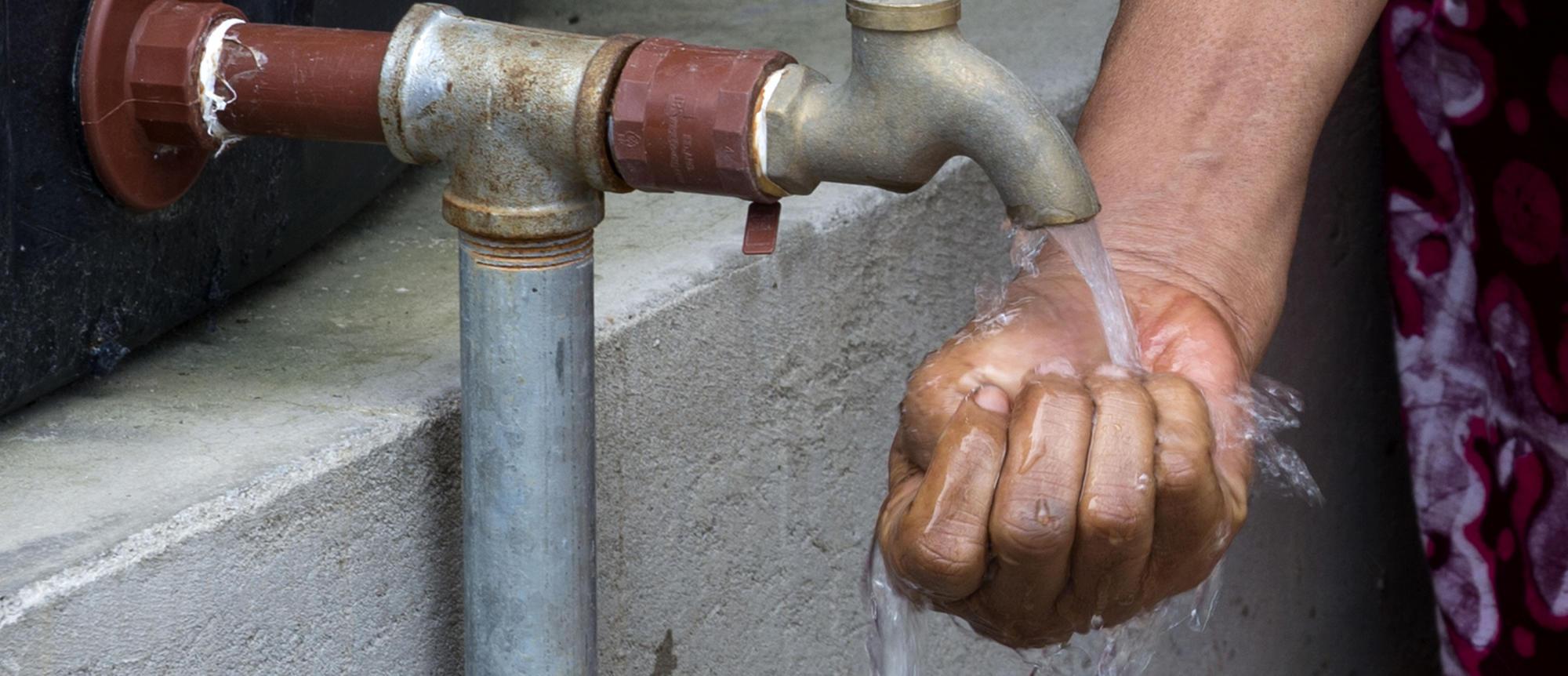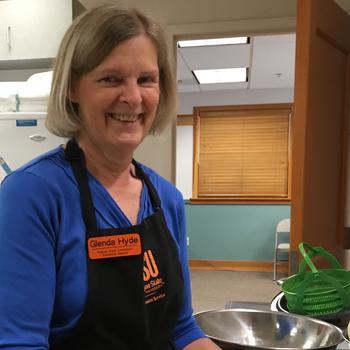Introduction
Natural disasters can occur at any time and without warning. These unexpected emergencies often cause temporary loss of power and utilities. When these disruptions occur, we need to be able to live without modern conveniences like potable water, electricity, natural gas and fuel.
One disaster that officials are gearing up for is the Cascadia Subduction Zone earthquake.
Scientists say there is a 37% chance that a major earthquake will occur along the Oregon Coast sometime within the next 50 years. The earthquake is expected to come from a rupture of the 600-mile fault called the Cascadia Subduction Zone, which sits from 70 to 100 miles off the Pacific Coast.
This publication, along with others in the Creating a Culture of Preparedness series, are part of Oregon State University Extension Service’s free online training, Preparing for the Cascadia Subduction Zone Event. The sessions are open to everyone. They include videos, narrated presentations, simulations, interactive maps, articles and other resources exploring what the earthquake and tsunami will be like and how those affected can recover.
After the earthquake, many Oregonians may be without utilities for weeks or months. Consequently, the Oregon Office of Emergency Management has launched a campaign - titled "2-Weeks Ready" - to encourage Oregon residents to set aside two weeks' worth of food, water, medicines and other supplies.
In some areas, four weeks of food and water are recommended. Check with your local emergency manager. When everyone prepares, emergency responders can focus their limited resources on injured or vulnerable populations after a disaster.
In this publication, we explore a variety of methods for purifying and storing water for an extended emergency. We’ll also discuss how to find or make safe water from additional sources.
Storing water for emergencies
Amount of water to store
Each person uses roughly a gallon of water per day for drinking, meal preparation, cleanup and personal hygiene. Individual needs vary by age, activity level, health, diet and climate.
The Centers for Disease Control also recommend 1 gallon of water for most common household pets. Therefore, plan to store 1 gallon of water per day for each person and pet in the household for a minimum of three days and preferably two to four weeks. For example, four human members and two animal members of a household will need 6 gallons of water per day stored.
This is a conservative amount, and you will need to use it wisely. Consider practicing and only using stored jugs of water for a few days to see how much water your household uses.
For the recommended two weeks, plan to store 14 gallons per person and pet. For each individual, you will need two 7-gallon, camping-style water containers, 14 1-gallon jugs, 27 2-liter bottles or 53 1-liter bottles.
Water storage containers
When choosing containers, consider how they will be used. Can the water be poured easily from the container? One gallon of water weighs 8.3 pounds. Will the water jugs be too heavy to transport if you are evacuated?
Water can be purchased in large containers for emergency purposes. Follow directions for storing and observe the expiration date.
Using your own containers for water storage is less expensive, however. When storing tap water for emergencies, use screw-top containers manufactured for food use (such as plastic soda bottles, juice bottles or water jugs).
Do not use repurposed plastic milk jugs. They are made from biodegradable plastic that could develop leaks. Also, protein from the milk can cause the stored water to spoil. Glass containers can also break. Commercially bottled water should be replaced every six months for quality purposes.
The best option is to use food-grade, heavy-duty plastic buckets, carboys or drums stamped with a PETE or HDPE recycle code.
Preparing water storage containers
All containers used for storing water need to be sanitize4d before adding potable water.
- Clean the container with warm, soapy water. Rinse with hot water.
- Add 1 teaspoon of unscented, household liquid chlorine bleach to 1 quart (32 ounces, 4 cups, or about 1 liter) of water.
- Pour the bleach mixture into a clean storage container, close securely and shake well, making sure that the solution coats the entire inside of the container.
- Let the container sit for at least 30 seconds, then pour out the sanitizing solution.
- Let the container air dry or rinse it with clean, purified water.
Preparing water for storage
City water from municipal water sources is already treated to be safe, so no additional treatment is necessary. Fill the clean, sanitized, food-grade container with tap water and close securely.
Water from a well or spring, known to be pathogen-free but not chemically treated, should be purified by boiling or adding unscented, household, liquid chlorine bleach.
- Boiling is the safest method of treating water. Bring the water to a full, rolling boil for a minimum of one minute (three minutes for elevations above 6,500 feet). Let cool.
- To purify, use a medicine dropper to add unscented, household liquid chlorine bleach (no additives). Use:
- Two drips of 5%-6% sodium hypochlorite bleach per quart of water.
- Eight drops of 1/8 teaspoon of concentrated 8.25% sodium hypochlorite bleach per gallon of water.
Stir mixture well. Let it stand for at least 30 minutes before you use it. Store the purified water in clean, sanitized containers with tight covers.
Label the container with the words "Drinking Water" and the date stored. if utilizing large containers for long-term water storage, use the following water-to-bleach ratios to ensure the water is sanitized:
- 5 gallons water: 3/4 teaspoon bleach
- 7 gallons water: 1 teaspoon bleach
- 15 gallons water: 2 teaspoons bleach
- 55 gallons water: 2 tablespoons bleach
Storage conditions
It is best to store the water in a dark, dry, consistently cool space. At the very least, store the water in an environment that stays at a constant temperature and is out of direct sunlight. Store water away from cleaning supplies, fertilizer and any product with strong odors. These odors can be absorbed by the storage container and transferred to the water.
Tip: A freezer is most efficient when it is full. Fill empty spaces with food-grade plastic or metal containers of water. Let the water freeze, then cap the container. This serves many purposes:
- It increases the freezer's efficiency.
- It creates jugs of ice that can be used in a cooler when transporting food or camping.
- It helps keep the freezer cold as long as possible in the event of the loss of power.
- As it melts, it provides safe drinking water.
Using stored water
Once the container is opened, use the water rather than re-storing it. If stored water has a flat taste, pour it back and forth between two clean containers several times to reoxygenate it. Taste changes over time, so follow the best-by dates on store-bought water and replace water in your own containers every six months. Repurpose your "expired" water by using it in the garden or for cleaning.
After an emergency
In the event of a widespread, devastating event like the Cascadia Subduction Zone earthquake, your emergency water supply may not be enough, and you will need to obtain water from other sources.
Emergency inside water sources
If authorities warn that public water is unsafe, or if there are signs of broken water lines, shut off the water lines entering the home. This prevents unclean water from entering your home's water system and contaminating the usable water inside your home. Keep in mind:
- The home’s pipes hold water. Use every drop at each faucet wisely. Water drains downhill, so obtain that last drop from the lowest faucet. Turn off your house water supply at the street to keep sewage from backing up into your water system. Plug bathtub and sink drains.
- Water from the water-heater tank is also usable in a disaster. Turn off the power and the hot water source before draining water from the tank. Open the drain at the bottom of the tank and be careful; the water may still be hot. There may be some sediment that escapes with the water when you begin draining. Wait for the water to clear, then change to a new container. Filter the sediment out of the first container with a coffee filter.
- Water from the toilet tank (not the bowl) is usable after purification if a chemical - such as those that turn the water blue - has not been used to keep the bowl clean.
- Remember the jugs of water you put in the freezer? And the ice cube trays? They will provide usable water when you need it. All you have to do is melt the ice.
- The juice and water in canned foods can be used in an emergency. Don't throw it out. Incorporate the liquid into your meals.
- Water from swimming pools and spas can be used for washing, cleaning and related uses, but not for drinking.
- Do NOT use water from a waterbed for drinking. The waterbed mattress contains an algaecide that is not safe to drink. This water can be used for sanitation purposes in an emergency, however.
Emergency outside water sources
There are several water sources in our environment:
- Rivers and streams.
- Lakes and ponds.
- Springs and untested wells.
- Collected rainwater.
When using these sources, choose quickly-moving springs and rivers first. They have fewer pathogens than lakes, ponds and most rainwater-collection barrels. However, the water from springs, rivers and other natural sources must be purified to drink.
Avoid water with floating materials, an odor or dark color. Do not use floodwater. Water contaminated with fuel or toxic chemicals cannot be made safe by boiling or disinfection.
Purifying water
When in doubt about water’s quality, purify it. Except for boiling, few water treatments remove all pathogens. If the water is cloudy or has visible debris, let it settle then f ilter it through a clean cloth, cheese cloth, jelly bag, paper towel or coffee filter.
Purification procedures
Boiling
Boiling is the best way to make water safer to drink. Boiling kills viruses, bacteria and parasites that can cause disease and illness. Follow directions in the “Preparing water for storage” section.
Disinfecting
Disinfecting with chemicals kills viruses, certain bacteria, mildew and fungi. It will not remove bad taste or debris. If boiling water is not possible, use a combination of filtration and chemical disinfection. When using these methods, follow the manufacturer’s instructions carefully.
Follow directions to disinfect in “Preparing water for storage” section. Powdered drink mixes such as Kool-Aid or Crystal Light mask the flavor of disinfected water, so keep some in your emergency kit.
Iodine and tablets containing iodine or chlorine
- Add five drops of 2% tincture of iodine to each quart of water.
- If water is cloudy, add 10 drops of iodine.
- Stir and let the water stand for at least 30 minutes before use.
- Follow the manufacturer's instructions on the label or on the package.
Water disinfected with iodine is NOT recommended for pregnant women, people with thyroid problems or those with hypersensitivity to iodine. No one should continuously use iodine for more than a few weeks at a time.
A combination of filtration and purification removes and kills pathogens.
Distillation
While boiling and chlorination will kill most microbes in water, distillation will remove microbes (germs) that resist these methods. Distillation also removes heavy metals, salts and most other chemicals. Distillation involves boiling water and then collecting the vapor that condenses. The condensed vapor will not include salt or most other impurities.
To distill, fill a pot halfway with water. Tie a cup to the handle on the pot’s lid so that the cup will hang rightside-up when the lid is upside-down (make sure the cup is not dangling into the water) and boil the water for 20 minutes. The water that drips from the lid into the cup is distilled.
Filtering
Filtering mechanically removes contaminants. Most f ilters can remove everything but viruses.
Many portable water filters can remove many pathogens. When choosing a portable water filter, pick one that has an absolute pore size of less than or equal to 1 micron. Another option is to choose one that has been tested and certified to a National Sanitation Foundation and American National Standards Institute Standard 53 or 58 for cyst reduction and cyst removal. You can also choose one that uses reverse osmosis. Most filters will not remove bacteria or viruses.
Carefully follow the manufacturer's instructions for your water filter. After filtering, add a disinfectant such as iodine, chlorine or chlorine dioxide to the filtered water to kill any viruses and remaining bacteria.
Note: Filters collect germs from water, so someone who is not immunocompromised should change the filter cartridges. Anyone changing the cartridges should wear gloves and wash hands afterwards. Poor filter maintenance or failure to replace the filter cartridges as recommended by the manufacturer can cause a filter to fail.
Other treatment methods
Other treatment methods can be effective against some pathogens, including:
- Ultraviolet light can be effective against some microorganisms. The technology requires effective prefiltering and is not 100% effective. Follow manufacturer's directions.
- MIOX systems use a salt solution to create mixed oxidants, primarily chlorine. Chlorine is low to moderately effective at killing parasites and highly effective at killing bacteria and viruses. Carefully follow manufacturer's instructions.
Community water distribution
Emergency water distribution sites will likely be set up in many Oregon communities after the disaster. Your local emergency manager should be able to direct you to it.
Summary
Store at least the recommended amount of safe water before the disaster. After the disaster, water can be found from other sources.
Water can be made safe by boiling, disinfecting or a combination of filtering and disinfecting. Keep water in all of your disaster kits.
Know when and where community food and water distribution sites are planned for your community. Keep in mind:
- Boiling is the best method to purify water. Clear water should be brought to a rolling boil for one minute. At altitudes greater than 6,500 feet, boil water for three minutes. If water is not clear, filter sediment in the water using a coffee filter or tight-weave cloth before boiling.
- If boiling water is not possible, a combination of filtration and chemical disinfection is the most effective pathogen-reduction method. Follow the manufacturer's instructions.
- Disinfection can be used as a pathogen-reduction method against microorganisms. However, contact time, disinfectant concentration, water temperature, water cloudiness, water pH and other factors can influence the effectiveness of chemical disinfection. The length of time and concentration of disinfectant varies by manufacturer, and the effectiveness of pathogen reduction depends on the product. Complete effectiveness may not be achieved. Follow the manufactuer's instructions.
- Filtration systems can be used as a pathogenreduction method against most microorganisms, depending on the pore size of the filter, amount of the contaminant, particle size of the contaminant and charge of the contaminant particle. Follow the manufacturer’s instructions. Only filters that contain a chemical disinfectant matrix will be effective against some viruses.
- Consider water needs at home, where the majority of your supplies will likely be stored, as well as at work or school. A small water filter or iodine tablets should be stores in "bug-out" survival bags and vehicle emergency kits.
Visit the CDC website for more information.
Find more information on selecting appropriate water filter.
Project supported by National Institute of Food and Agriculture Smith Lever Special Needs Competitive Grants Program (Award# 2018-41210-28702).



